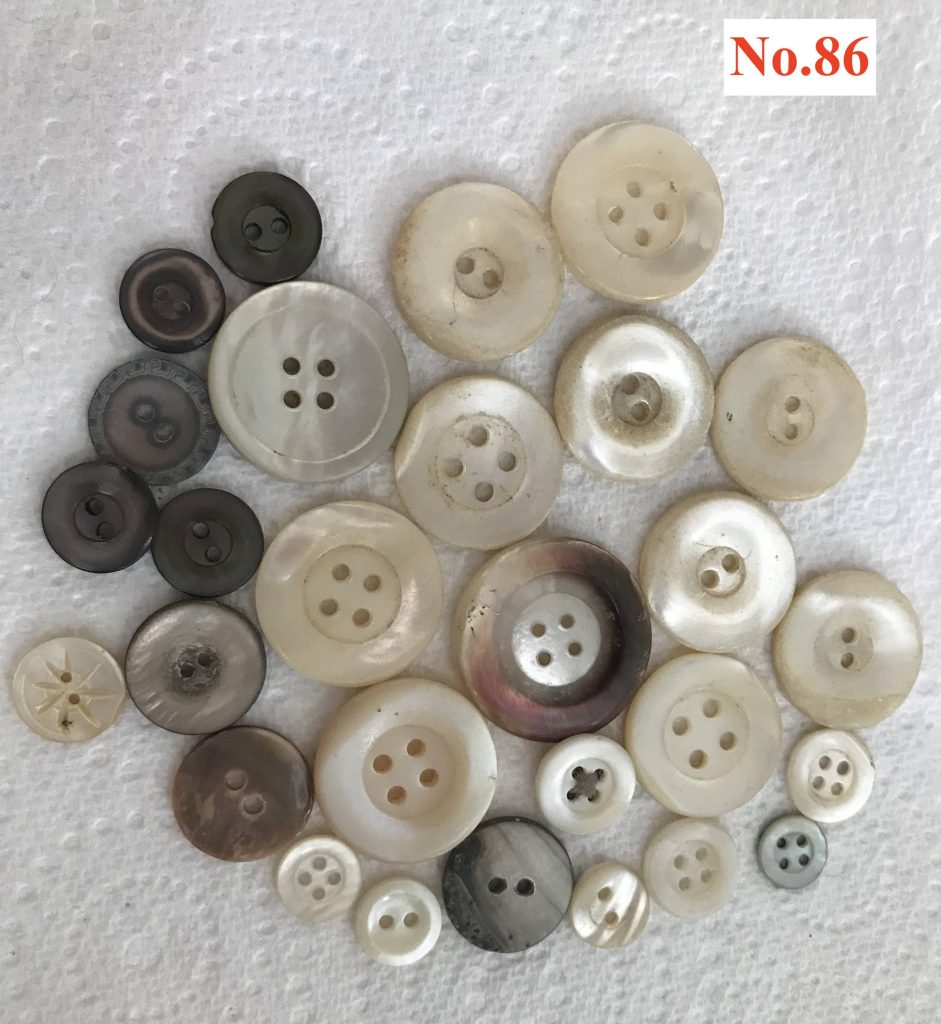
What can a handful of buttons have to do with Chinese Australian history? The clue of course is in the fact that they are made of pearl shell, once the material most buttons were made of. This was also a material that for a time came largely from the pearl shell fleets that operated from such Australian ports as Broome, Darwin and Thursday Island. It is this that links the Pearl shell industry with many peoples, Chinese Australians among them.
The pearl shell industry was perhaps the one that forced the White Australia policy to compromise itself the most. The Australia that evolved the White Australia policy did so in the belief that a nation populated with “white” people was best for various reasons. At the same time, it also found that there were many industries that these same “white” people could or would not do – at least at the exploitative levels required to maintain what “white” owners felt their due. The result was a series of loopholes and evasions within the White Australia policy administration of which the Pearl shell industry was arguably the largest and most consistent. (See No.77) Though the substitutes and assistants policies are a close parallel. (See No.28 – cafes, No.32 – market gardeners.)
Deep sea pearling and the dangerous diving it entailed was mostly left to those willing and able to do this work, many though not exclusively from Japan. Chinese people were involved in many other aspects including the owning of Pearl luggers. However, this deep sea gathering of pearl shells only evolved as the pearl shells that could be gathered from shallow waters was exhausted. Thus, at the beginning of 1886 the pearl shell banks of Shark Bay, some 700 km north of Perth, were opened up and Chinese pearlers supposedly from Singapore and Hong Kong, as well as many previously working for others on the pearl luggers were active; described by one newspaper as a “Mongolian Invasion”.[1] By May 1886 it was reported that 153 “Asiatic residents” (including people labeled “Malay”) and 56 “Europeans” were at Shark Bay. These Europeans began to demand government restrictions while their efforts to prevent the Chinese from collecting pearl shell were met with resistance.[2] When the government did legislate it was to establish a licensing system designed to ensure that Chinese pearl shell gatherers would not get any licenses.[3]
When this legislative discrimination was known lawyers were hired and the Governor petitioned. But it was the threats of open defiance on the pearl shell banks of Shark Bay that worried the local police who called for armed reinforcements. The Chinese pearlers eventually demanded compensation and the government, perhaps shamed by its discrimination or at least frightened by the prospect of violence, agreed. After requesting £1,525 to cover the cost of “houses, boats and gear” a sum of £1,000 was agreed and in an ironic exit many of the Chinese men left Shark Bay on the same ship that had brought them down from Singapore; the S. S. Natal.[4] This being the name soon to be given to the test that would become the foundation of the White Australia policy. (See, Adding to the Great White Walls.)
Despite the cry that the Chinese would ruin the pearl shell banks, by 1891 it seems the white pearlers had managed to do that by themselves.[5] With Federation and the legislation of the White Australia policy in the Immigration Restriction Act the need to compromise with an industry that by 1910 had over 350 luggers operating out of Broome to supply 75% of the world’s pearl shell output was obvious.
[1] Western Mail, 2 January 1886, p.24.
[2] Victorian Express, 29 May 1886, p.3.
[3] Western Mail, 2 January 1886, p.24.
[4] Atkinson, Anne, “The responses of Chinese capital to social and economic restrictions and exclusions in Western Australia”, in Macgregor, P., Histories of the Chinese in Australasia and the South Pacific, Melbourne, Museum of Chinese Australian History, 1995, pp.30-32. The West Australian, 22 November 1886, p.3. https://trove.nla.gov.au/newspaper/article/3758779
[5] Western Mail, 29 August 1891, p.6.

